#Royal Women of Bavaria
Text
Crazy In Love¹
A Strollonso AU where Fernando succeeds the Spanish throne and makes it his goal as king to make the Prince of France his groom. (3.4k words, dark!nando) [@catboysracing] {l could've made nando a lot worse but I didnt want this to be 10k words 😭 this is a very rushed rough draft so if i make this a series it'll be more drawn out,, or maybe not idek its 02:26 im tired ☠️}
masterlist - next part


Lawrence stepped out of his carriage, holding his hand out to his wife as she carefully placed a foot on the ground, using Lawrence's shoulder for support as she planted both of her shoes on the stone pathway below them.
Lance peeked his head out before exiting, following his fathers lead in holding out his hand to help his sister, Chloe, out as well. His other siblings had already been married off and attending this ball in the Royal Palace of Madrid was his parents' way of finding their youngest children suitors.
"Very good, my boy" The king praised before the four of them began their walk into the palace. They were shown to the ballroom where most of the guests were straight away. The room was all white with gold detailing, artwork littered on the ceiling as spirals of gold framed the dozens of doors surrounding them
"Pardon me" The queen spoke softly, lightly touching her husbands arm before disappearing through the crowd to make her way to Maria Theresa the Archduchess of Austria.
"Excuse me, Father, Can I go speak with Marie?" Chloe spoke seconds later, her father simply nodding at the girls request. She smiled and muttered a thank you before finding her way to her friend, similarly to her mother.
Lance hated these things. Being in a closed space full of hundreds of people. He couldn't help the sour expression on his face as he looked around the bright room, eyes settling on his half brother Esteban. Lance was more than aware of his fathers infadelity and how he had three children with other women. Lance wasn't too fond of the younger two but he'd grown up close with Esteban and his mother Pauline de Mailly.
"Stop scowling, Lance." Lawrence spoke sternly, greeting his youngest son with a slap to his back
"Sorry, Father." Lance spoke, quick to fix his face as he turned to the king "May I be excused, Father? Esteban is on the other side of the ballroom."
"Go on."
Lance couldn't help but smile as he reached Estebans side, being quick to give him a nod
"Votre Altesse" Esteban hummed, trying to stop himself smiling as his little brother rolled his eyes at the title, he never called Lance Your Majesty unless he was teasing the younger boy "Brother, How are you?"
"I'm well, how long have you been here?"
"Oh, not long. Me and my mother arrived no more than an hour ago." Esteban spoke, Lance nodding at the response
"Have you had any of the food?" Lance asked, hoping his brother would say no so they could eat together
"I have not, shall we go together?" Lance smiled once more, nodding as he followed the older man to the long table of food and refreshments.
Fernando was speaking with Duke Maximilian III Joseph of Bavaria regarding the state of their allies during the ongoing war when he first spotted the French prince, his justaucorps a warm brown embroidered with intricate and colourful flowers. The boys hair was long and wavy, he was constantly brushing it out of his face as he spoke with the slightly older man next to him.
The new king was unsure of who the man next to him was but he was well aware of who Lance was. Fernando had met with Lawrence the second Ferdinand had died, as the new king it was his duty to keep up alliances between the dynasties. With Spain and France being the largest two dynasties as of then, having a relationship with Lawrence was very important to him.
As the conversation came to an end he excused himself to find the Frenchman again, pleased at how easy it was. He was standing off to the side as the man from before spoke with a woman from Sweden, Fernando taking the opprotunity to finally speak to him.
"Monseigneur Lance, it's a pleasure to meet you." Fernando bowed his head, holding a hand out to the shorter prince who's eyes shot up, they were hazel and seemed to sparkle in the dimly lit room.
"Sire," Lance spoke softly, taking Fernandos hand as the Spaniard placed a kiss on his knuckles, the younger boys face flushing pink at the usually meaningless action "the pleasure is all mine."
"I hope your journey here wasn't too strenous, it's a long ride from Versailles." Fernando spoke, letting go of the boys hand then stepping back slightly
"Of course not, I always prefer the carriage rides to the actual balls, anyway" he stated matter-of-factly, only realizing how rude it sounded seconds later. "Apologies, I'm not sure why I said that."
Fernando smiled, covering his mouth to let out a small laugh "There's no need to apologize, I feel the same."
Lance wasn't sure how to respond, all he could do was flash the king a smile, not expecting to relate to him of all people.
"Is it stuffy in here to you?" The Spaniard asked, cocking his head to the side before continuing "Would you like to ride around with me? Get some fresh air."
"I'd love to." The teenager responded with no hesitation, face lighting up at the idea
"Let's go, then. I'll give you a personal tour of my dynasty as long as you'll return the favour." Fernando said, holding his hand out once more, but this time to steal Lance away
Fernando stood beside the door of the carriage, helping the prince get in before getting in himself. It was nice, Lance thought, being treated how princesses are treated. As the carriage began moving he couldn't get the feeling of the Spanish mans lips on his knuckles out of his mind, it was embarrassing just how much he had replayed it already.
"Will your family be staying the night? Most of my guests are but if you're leaving before dawn I'll be sure to return you in time." The king spoke, Lance's eyes focusing on the mans mouth as his lips moved, hardly registering his words.
"I'm sure we will be, my mother and sister prefer to get a decent amount of rest before returning home after balls."
"Perfect, that gives us plenty of time, then." Fernando nodded to himself, moving to sit on the same side as Lance as he pulled back the curtains, the sunset illuminating the streets perfectly.
The smaller boys eyes found their way outside, practically twinkling as he admired just how gorgeous it looked at this time of day
"It's beautiful" He whispered, not bothering to turn and see the older mans reaction
"It is" The Spanish man said quietly, he knew what Lance meant, the landscape was beautiful. Of course Fernando knew that, he lived here, but he only thing he could see was the Prince next to him, he was truly beautiful.
The two continued down the road for a few more minutes before they reached town, Fernando noticing his guards escorting Jesuits from their home right away. He swiftly closed the curtains and began distracting Lance, not wanting the sweet boy to witness the men in black cassocks being pushed and shoved through the streets of the small town they had entered. The new king had made it his first order to expel every resident of the Spanish Empire that was concerningly loyal to the Pope as soon as he had been crowned. He would never admit it as he was too full of pride but he felt threatened by the men devoting themselves to the pope. He was above the pope. He was king. He had power and he was going to make sure every commoner he ruled over was aware of that.
"Hm?" Lance hummed as he noticed the curtains draw shut, turning his body to face the larger man, having not taken in just how drastic their size difference was. Not only was there a difference in power from Spanish King to French Prince but there was also a difference in aura, the mans eyes on him felt intimidating, Lance gazing hesitently at the man as the carriage fell quiet, Fernandos lidded eyes not leaving Lance's for a second
"We're rebuilding in this area, I'd hate for you to see how much of a mess it is right now." He lied, the words slipping off of his tongue as if they were as true as scripture, reciting it as if it was a verse he'd spent weeks remembering.
The credulous boy just nodded, having way too much trust in the man he'd become acquainted with just minutes prior.
"I'm sure it looks fine, every part of your kingdom I've seen so far has been stunning." The Frenchman reassured, wondering if maybe the new King was insecure about the state of his colonies.
"Why, thank you, Monseigneur Lance." Fernando smiled, partially because of the sweet words coming from the boy at his side but also because of just how easy he was to trick "you're too kind."
"No need to be so formal, Your Majesty." Lance scooted back, eyes following Fernando as his arm moved to open the curtains once more, now far enough away from his men to insure Lance saw nothing. "It's just us"
"If I'm to just call you Lance then please, call me Fernando."
"Well, Fernando." Lance started, looking outside of the carriage before turning back to the man "Can you tell me more? About your dynasty. I've only learned what's in the books"
"You've read books about my kingdom?" Fernando laughed dryly, finding it funny how the Prince of France spent his free time reading about the Spanish Empire.
"I've read about many things." Lance nodded, locking his fingers together in his lap "My Father would rather me learn than fight in the war."
"Ah, yes." Fernando nodded, having forgotten about what was currently happening on his allies land. "I understand where he's coming from. I was hesitant to put my sons in command as well."
"How many sons do you have, Fernando?" Lance asked, not having read much about the new kings family
"Three, they're all around your age" Fernando looked outside, smiling to himself as he watched Lance turn to look as well "Carlos is my eldest, then Lando, then my youngest boy Oscar."
"You have only sons?" Lance asked, still looking outside, watching as their surroundings began to get darker and darker
"Yes, just three boys."
"What about their mother? There isn't a queen, is there?"
Fernando shook his head, leaning on the wall behind him before responding, arms crossed over his chest as he watched "Their mother died a few years ago, Tuberculosis they think."
"Oh." He whispered, only now turning to look at the Spaniard, biting his lip slightly in an effort to hide his newfound discomfort "I'm sorry, I- I didn't know."
"Don't apologize." He spoke, harsher than he had before. "Was nothing I could do, the boys are old enough to deal with it and I had more important things to do than wallow in my own self pity."
Lance just nodded, fidgeting with his fingers as he avoided the Spaniards gaze, feeling embarrassed for even bringing it up, although a part of him was relieved to find out the King didn't have anyone at his side
The man reached out to grab Lance's hand, quickly letting his coachman know they were getting out and to wait for them.
The naive Prince followed blindly, letting the man ahead of him pull him through unfamiliar land as if they'd known one another all their lives. Fernando couldn't help but take note of everything Lance was so quick to let him do to him, he couldn't help but wonder just how far he could push it.
They eventually reached a short stone pathway and at the end was a small pavillion with a bench nestled towards the back where plants were growing up the wood. By then it'd gotten darker, Fernando glad to have matches on him as he lit the lamps around the wooden structure
"Woah" Lance breathed out, admring the garden he'd found himself in as Fernando dusted off the bench, still holding onto the boys hand as he pulled him to take a seat
"I haven't been here in ages. I figured if I was going to go back it'd be fun to not be alone." Fernando hummed, the last time he was here he'd killed his father.
"Gosh, if I lived closer I'd spend all my time here!" Lance laughed, smiling up at the man who had yet to take a seat
"I used to, when I became King the first time I hardly had time" He spoke, looking around as soon as he finished, eyes falling on the steps in front of him, the place he'd met his father before quite literally stabbing him in the back. It was what the old bastard deserved. Without his actions Ferdinand would've never became king and Fernando would still be stuck in Naples.
"The first time?" Lance hummed, unbuttoning his justacourps and sliding it off before folding it neatly in his lap
"Si." Fernando nodded, finally taking a seat next to the Prince "Before my brother died I was the king of Naples and Sicily. My eldest, Carlos, is taking over as soon as he finishes being stubborn about his knightly duties."
The boy laughed, he'd grown so used to just hearing people around him speak that everything about Fernandos accent made his sarcasm even funnier. "You're very experienced, Fernando"
"I am." He confirmed, meaning it in more ways than the innocent boy could imagine. As a ruler? Yes, of course. Killer? He supposes. Husband? To some extent. Sexually? Very.
"How long did you rule over Naples and Sicily?" He asked, eager to learn more about the mysterious man beside him
"Twenty-four years, I took over when I was eleven so my mother helped me rule until I was married off and began having children."
"Wow, I feel like I haven't done anything as prince" Lance laughed, tracing the neatly done sewing on the cloth he had on his lap "My father took over France at five, his mother helped him until he was thirteen as well, but sometimes I wonder if I'll ever be king."
"You could be my king." The Spaniard spoke calmly, not sure why Lance began to react the way he did
"Hm?" He questioned, unsure if he was understanding the mans accent correctly
"Be my king. I have no bride, nor do I have a groom." The man shrugged, watching as Lance's facial expression controrted "It is not the 16th century anymore, is normal to have two kings, Lancito."
Lance was aware that it'd become more normalized to see two men ruling side by side, a part of him had always yearned for the connection between a King and his King Consort but until now he'd figured it'd just been out of pure curiosity and a need to figure out the unknown
"Are you asking me to madry you, Fernando?" Lance asked, knowing it seemed obvious enough but he had to be sure, maybe this was just a Spanish thing.
"Consider it." Fernando spoke, holding Lance's hands in his own "Don't say no straight away, this will give us both what we want."
"I'm not sure my father would say yes-" Lance began, eyebrows furrowing as the Spaniard cut him off
"You're father likes me, I'm sure he'll be delighted to hear his son has been proposed to by none other than his greatest allies king."
"I know, I'm just not sure he'll be comfortable with me being so far from home." Lance's voice got quieter as he spoke, not wanting his words to upset the man before him
"I'll take you to visit every chance we get, it'll be like you never left." His voice softened, realizing that if he was to get the French Kings son to marry him he'd have to play nice.
"Well, then.." He dragged out his words, looking at their hands together before responding. There was such a drastic contrast between them, the Spaniards naturally tan and thicker hands making the boys pale and lanky hands seem even smaller. "I suppose" He finished, figuring he wouldn't find anyone better than the Spaniard. He'd seen his siblings get married to ugly and unjust aristocrats that he was relieved someone so kind was asking for his hand in marriage.
The taller mans lips curled, he quickly stood up and pulled Lance to him, the Frenchman leaving his coat on the bench beside where he'd sat before being greeted by the sudden feeling of lips on his.
It was embarrassing to think about how bad of a kisser he had to be. He just tried to follow Fernandos lead, fingers trailing over the gold detailing of his dresscoat as the kiss began to deepen, the kings hands finding their way to the boys waist to pull them even closer, bodies practically connected as Lance settled on the tips of his toes in order to make this easier.
Once Fernando pulled away Lance felt light headed, lips now puffy and red as he breathed harshly, covering his face from the man out of pure embarrassment.
"Do not hide from me, Lancito." He cooed, leaning over to pull the boys hands from his face, thumb brushing over his lips before he spoke again "te ves guapo" the king whispered, Lance unable to hold back a smile as he registered Fernandos words, face flushing a familiar pink as the man called him beautiful.
"We should get back" Lance said softly, face turning to meet the Spaniards gaze as his hands lingered on his chest
"You're right, I should probably ask for your fathers blessing, eh?" They laughed, the prince nodding as the older man grabbed a lantern, calmly finding the way back to the carriage
Fernando couldn't keep his hands off Lance during the short ride back, hand inching further up the boys thigh as his face got hotter, now hidden in the collar of his casaca. It was painfully obvious how inexperienced the boy was, Fernando wasn't sure what he'd done in his past life to deserve such a reward but he was beyond grateful.
It didn't progress past teasing touches, Fernando curious to see just how worked up he could get the boy before he disappeared back into the ballroom to speak to his father.
The answer was very, as they came to a stop outside the palace Lance couldn't hide the look of pure arousal on his face as he felt the Spaniards hands leave, whining at the feeling of his touch fading
"Fer..." He whispered, grabbing weakly onto the mans sleeves as he begged for just a little more
"Patience, let's see what your father says before continuing this, mi rey" Fernando negotiated, kissing the boys jaw softly before exiting the carriage, disappearing inside before Lance had the chance to follow behind.
"How have you been, Your majesty?" The King asked, earning a short response from his ally. "I've come to ask something of you, if you don't mind."
"Go ahead" Lawrence nodded, watching the Spaniard with curiousity
"I'd like to ask for your blessing, King Lawrence." He stated plainly, looking the man in front of him in the eyes "I'd like to make your son my King Consort."
Lawrence nodded right away, arm moving to pat the tanned mans back, smiling similarly to Lance "I'd love to give you my son, I'm shocked you felt the need to ask, Sire."
They both laughed, Lawrence's practically coming from his stomach as he closed his eyes, Fernando returning a short, knowing, and dry laugh.
Lance wandered back into the ballroom, greeted with a light hug from his mother, it wasn't normal in his family for her to show affection to him like this so he was almost worried something had gone wrong but as soon as he saw Lawrence and Fernando side by side he knew what'd happened, he was now set to marry the King of Spain.
#f1#formula 1#lance stroll#fernando alonso#aston martin#ls18#strollonso#fa14#crazy in love au#royalty au#1700s#spanish empire#french empire#evil king#innocent prince#opposites attract#innocence kink lowkey#idk if im gonna write smut for this#power imbalance#height difference#swapped heights#f1 au#strollonso au#rpf#fanfic#alternate universe#real person fiction#fan fiction#f1 rpf#lance is so naive
84 notes
·
View notes
Text

I typed up the Pentiment bibliography for my own use and thought I’d share it here too. In case anyone else is fixated enough on this game to embark on some light extra-curricular reading
I haven’t searched for every one of these books but a fair few can be found via one of the following: JSTOR / archive.org / pdfdrive.com / libgen + libgen.rocks; or respective websites for the journal articles.
List below the cut!
Beach, Alison I, Women as Scribes: Book Production and Monastic Reform in Twelfth-Century Bavaria. Cambridge University Press, 2004
Berger, Jutta Maria. Die Geschichte der Gastfreundschaft im hochmittelalterlichen Mönchtum die Cistercienser. Akademie Verlag GmbH, 1999
Blickle, Peter. The Revolution of 1525. Translated by Thomas A. Brady, Jr. and H.C. Erik Midelfort. The Johns Hopkins University Press, 1985
Brady, Thomas A., Jr. “Imperial Destinies: A New Biography of the Emperor Maximilian I.” The Journal of Modern History, vol.62, no.2, 1990. pp. 298-314
Brandl, Rainer. “Art or Craft? Art and the Artist in Medieval Nuremberg.” Gothic and Renaissance Art in Nuremberg 1300-2550. The Metropolitan Museum of Art, 1986
Byars, Jana L., “Prostitutes and Prostitution in Late Medieval Barcelona.” Masters Theses. Western Michigan University, 1997
Cashion, Debra Taylor. “The Art of Nikolaus Glockendon: Imitation and Originality in the Art of Renaissance Germany.” Journal of Historians of Netherlandish Art, vol.2, no.1-2, 2010
de Hamel, Christopher. A History of Illuminated Manuscripts. Phaidon Press Limited, 1986
Eco, Umberto. The Name of the Rose. Translated by William Weaver. Mariner Books, 2014
Eco, Umberto. Baudolino. Translated by William Weave. Boston, Mariner Books, 2003
Fournier, Jacques. “The Inquisition Records of Jacques Fournier.” Translated by Nancy P. Stork, San Jose University, 2020
Geary, Patrick. “Humiliation of Saints.” In Saints and their cults: studies in religious sociology, folklore, and history. Edited by Stephen Wilson. Cambridge University Press, 1985. pp. 123-140
Harrington, Joel F. The Faithful Executioner: Life and Death, Honor and Shame in the Turbulent Sixteenth Century. Farrar, Straus and Giroux, 2013
Hertzka, Gottfied and Wighard Strehlow. Große Hildegard-Apotheke. Christiana-Verlag, 2017
Hildegard von Bingen. Physica. Edited by Reiner Hildebrandt and Thomas Gloning. De Gruyter, 2010
Julian of Norwich. Revelations of Divine Love. Translated by Barry Windeatt. Oxford University Press, 2015
Karras, Ruth Mazo. Sexuality in Medieval Europe: Doing Unto Others. Routledge, 2017
Kerr, Julie. Monastic Hospitality: The Benedictines in England, c.1070-c.1250. Boydell Press, 2007
Kieckhefer, Richard. Forbidden rites: a necromancer's manual of the fifteenth century. Sutton, 1997
Kümin, Beat and B. Ann Tlusty. The World of the Tavern: Public Houses in Early Modern Europe. Routledge, 2017
Ilner, Thomas, et al. The Economy of Dürnberg-Bei-Hallein: an Iron Age Salt-mining Centre in the Austrian Alps. The Antiquaries Journal, vol. 83, 2003. pp. 123-194
Làng, Benedek. Unlocked Books: Manuscripts of Learned Magic in the Medieval Libraries of Central Europe. The Pennsylvania State University Press, 2008
Lindeman, Mary. Medicine and Society in Early Modern Europe. Cambridge University Press, 2010
Lowe, Kate. “'Representing' Africa: Ambassadors and Princes from Christian Africa to Renaissance Italy and Portugal, 1402-1608.” Transactions of the Royal Historical Society Sixth Series, vol. 17, pp. 101-128
Meyers, David. “Ritual, Confession, and Religion in Sixteenth-Century Germany.” Archiv für Reformationsgeschichte, vol. 89, 1998. pp. 125-143
Murat, Zuleika. “Wall paintings through the ages: the medieval period (Italy, twelfth to fifteenth century).” Archaeological and Anthropological Sciences, vol. 12, no. 191. Springer, October 2021. pp. 1-27
Overty, Joanne Filippone. “The Cost of Doing Scribal Business: Prices of Manuscript Books in England, 1300-1483.” Book History 11, 2008. pp. 1-32
Page, Sophie. Magic in the Cloister: Pious Motives, Illicit Interests and Occult Approaches to the Medieval Universe. The Pennsylvania State University Press, 2013
Park, Katharine. “The Criminal and the Saintly Body: Autopsy and Dissection in Renaissance Italy.” Renaissance Quarterly, vol. 47, no. 1, Spring 1994. pp. 1-33
Rebel, Hermann. Peasant Classes: The Bureaucratization of Property and Family Relations under Early Habsburg Absolutism, 1511-1636. Princeton University Press, 1983
Rublack, Ulinka. “Pregnancy, Childbirth, and the Female Body in Early Modern Germany.” Past & Present, vol. 150, no. 1, February 1996. pp. 84-110
Salvadore, Matteo. “The Ethiopian Age of Exploration: Prester John's Discovery of Europe, 1306-1458.” Journal of World History, vol. 21, no. 4, 2011. pp. 593 - 627
Sangster, Alan. “The Earliest Known Treatise on Double Entry Bookkeeping by Marino de Raphaeli”. The Accounting Historians Journal, vol. 42, no. 2, 2015. pp. 1-33.
Throop, Priscilla. Hildegard von Bingen's Physica: The Complete English Translation of Her Classic Work on Health and Healing. Healing Arts Press, 1998
Usher, Abbott Payson. “The Origins of Banking: The Primitive Bank of Deposit, 1200-1600.” The Economic History Review, vol. 4, no. 4, 1934. pp. 399-428
Waldman, Louis A. “Commissioning Art in Florence for Matthias Corvinus: The Painter and Agent Alexander Formoser and his Sons, Jacopo and Raffaello del Tedesco.” Italy and Hungary: Humanism and Art in the Early Renaissance. Edited by Péter Farbaky and Louis A. Waldman, Villa I Tatti, 2011. pp. 427-501
Wendt, Ulrich. Kultur und Jagd: ein Birschgang durch die Geschichte. G. Reimer, 1907
Whelan, Mark. “Taxes, Wagenburgs and a Nightingale: The Imperial Abbey of Ellwangen and the Hussite Wars, 1427-1435.” The Journal of Ecclesiastical History, vol. 72, no. 4, 2021, pp. 751-777.e
Wiesner-Hanks, Merry E. Women and Gender in Early Modern Europe. Cambridge University Press, 2008
Yardeni, Ada. The Book of Hebrew Script: History, Paleography, Script Styles, Calligraphy & Design. Tyndale House Publishers, 2010
#pentiment#Pentiment bibliography#some of these books give me strong first-year undergrad vibes#even just seeing ulinka rublack’s name gives me semi-traumatic flashbacks to cultural history seminars#would I cope better with it now that I don’t have to write essays each week on the topic?#¯\_ (ツ)_/¯#probs not tbh#also it probably would have been a lot faster if I could have pulled this list from game files somehow#but I do not know how to do that :)))#Anyway I hope this is of use to somebody at some point#I wish you all a very happy reading about the primitive deposit banking system everybody 😌
778 notes
·
View notes
Text
Hats and Pearls – Regency Style

Joseph Karl Stieler (German, 1781-1858) • Princess Auguste-Amélie of Bavaria (detail) • c. 1820
Of the dizzying number of hat and bonnet styles throughout the Regency era, the one above is among the most tasteful. I'm not sure what it's made from, though it looks like some sort of gold mesh material. The beads look to be threaded through strands of thin silk cord, arranged around the hat and sewn in place. I rather like it, though not as much as I like the pearls!
About those pearls...
Composed of two strands of one hundred and five natural pearls, suspending seven detachable drop-shaped natural pearls, all capped with rose-cut diamonds, to the clasp set with an old-mine-cut diamond. Attributed to Nitot, the predecessor of the House of Chaumet, the necklace likely originated with the famed Empress Josephine, the first wife of Emperor Napoleon.
The famous pearls adorned the necks of several royal women's portraits, so perhaps a post on those portraits and the attire of the sitters will be coming soon. Back to hats for now.


Left: 1809 styles. Hat # 4 is described as "A turban hat of crape, ornamented with beads and feathers. (Source: Regency World) It most closely resembles the hat that Princess Auguste-Amélie wears for her portrait. These turban hats are a refreshing departure from the very tall feathers on the outrageous hats worn only a few years before.
Right: 1810-1819 styles: Chapeaux et toque. These styles too are very attractive. In both plates, notice the feathers are much smaller and that several are arranged to fall downward and frame the face, or they're arranged partway across the brim.




#art#fashion history#painting#portrait#women's fashion history#royal portraits#art history#fine art#the resplendent outfit blog#regency fashion#early 19th-century hat fashions#women's portraits#joséphine's pearls#1809-1819 hat styles#art & fashion history blog#regency turban hats
26 notes
·
View notes
Text
The career of Bertha, daughter of Lothar II [and Waldrada], reveals that women were not simply passive bystanders in the politics of the period. As the transmitter of legitimacy through blood, she was in fact a key player. [...] She was considered a major force in Italian politics, and her political aspirations may have extended much further than the Tuscan region or even the kingdom of Italy.
-Patricia Skinner, "Women in Medieval Italian Society, 500-1200" / Daniel G. König, "Bertha of Tuscany's Correspondence with al-Muktafī bi-llāh in the Version of Ibn al-Zubayr."
[Bertha of Lotharingia was] an ambitious and politically successful female member of the Carolingian elite. The daughter of Lothair II of Lotharingia, she was born around 860 or 865. Married before 880 to count Theobald of Lorraine, she shared her husband’s exile in Arles, where he had sought refuge with Boso, the King of Provence (r. 879–887) after the latter’s brother Hugo had attempted to conquer Lorraine. She bore him four children who were to attain influential positions in a region spanning southern France and northern Italy.
When Theobald died around 887, Bertha married the margrave Adalbert II of Tuscany (r. 885–915). Adalbert’s family had much property in Provence, carried the epithet dives and led a lavish court life in Lucca. […] Theo Kölzer described Adalbert’s policy as
“characterised by a skilful manoeuvring between the individual candidates for the royal and imperial crowns, which he played off against each other for the sake of his own advantage, always taking care that the autonomy of his margraviate and his quasi-royal position did not suffer any damage in the turmoil of the time.”
Adalbert’s policy involved reacting to the ambitions of margrave Guido II of Spoleto, his son Lambert, margrave Berengar of Ivrea, duke Arnulf of Bavaria, and King Louis of Provence, all of whom aspired to the crown of Italy between the end of the ninth and the beginning of the tenth century. Adalbert II and Bertha first sided with Guido II and his son Lambert against Berengar, thus ensuring that Guido was crowned King of Italy in 889 and emperor in 891, his son Lambert becoming royal and imperial co-regent in 891 and 892 respectively. The couple’s support for Guido and Lambert expressed itself in the fact that their two sons were christened Guido and Lambert between 891 and 894. Adalbert tried to impede Arnulf of Bavaria from interfering in Italian affairs in 894, but then turned against Lambert by cooperating with Berengar of Ivrea between 896 and 898. If we believe Liutprand of Cremona, it was around 898 that Adalbert tried to become king of Italy himself.
Around 900, Adalbert and Bertha supported the aspirations of King Louis of Provence to become emperor, possibly in the hope that Bertha’s son Hugo would thus be able to become King of Provence instead. When Hugo’s promotion failed to materialise, the couple turned against Louis, first by not impeding, then by actively supporting Berengar in his conflict with Louis. In this period, the couple already exerted enormous influence in Italy: the anti-pope Sergius III (sed. 898 and 904–911) had sought refuge with Adalbert and, according to Liutprand of Cremona, was “made pope by Adalbert” (papa per Adalbertum constituitur) in 904. In this year, the couple felt strong and independent enough to begin dating their documents according to their own regnal years. When Louis was eventually captured and blinded by Berengar in 905, he entrusted Bertha’s son Hugo—count of Vienne and Arles, duke and margrave of Provence—with the government of Provence.
[During this time, Bertha has been identified the royal woman who most likely sent a letter with an embassy in c.906 to the Caliph of Baghdad, al-Muktafi, where she described herself rather grandiosely as "queen of all the Franks". First brought to light by Muhammad Ḥamīdullāh , it has been rigorously studied and re-examined by historians. According to Daniel G. König: '...it becomes impossible to presume with Ḥamīdullāh that Bertha was a woman without political ambition who offered her hand in marriage to the caliph to escape her allegedly weak and unsuccessful husband [...] Rather, it becomes conceivable that Bertha could have developed a foreign policy strategy that looked beyond Italy and Byzantium and as far as Aġlabid North Africa. When she eventually understood that the Aġlabids were nominally subjected to the ʿAbbāsid caliphate, she looked eastwards to ʿAbbāsid Iraq. If there was a marriage proposal at all, she may have wanted to offer one of her daughters to the caliph, as François Bougard suggested [...] Bertha’s son Hugo (r. 903–947) certainly pursued a Mediterranean strategy as soon as he became king of Italy in 926. His intensive relations with Byzantium are recorded by the emperor Constantine VII Porphyrogenitus, his complex relations with the “raider colony” of Fraxinetum by Liutprand of Cremona. According to Ibn Ḥayyān (d. 468/1076), he approached the caliph ʿAbd al-Raḥmān III of Córdoba in 328/939–940 with the demand of a “security guarantee for merchants of his territory that travel back and forth between there and al- Andalus.” It does not seem far-fetched to assume that Hugo’s mother had already begun to think in the same lines of securing the Tyrrhenian Sea for Tuscany and of expanding the region’s security and economic purview.']
In 906, the year in which Bertha is said to have sent her letter to the ʿAbbāsid caliph, Louis of Provence had retired from the competition for the imperial throne, whereas Adalbert and his wife were confronted with the imperial ambitions of Berengar of Ivrea, which they opposed by blocking the Apennine pass leading him to Rome. Bertha seems to have been strongly involved in containing Berengar. That she wielded power at the side of her husband is evident from her correspondence with the archbishop of Ravenna. Germana. Gandino proposed that, in the contest with Berengar, Bertha was able and willing to present herself as a descendant of Charlemagne, as heiress of the Carolingian dynasty in Italy, and thus as a legitimate alternative candidate to the imperial throne. While this may seem unconceivable at first sight, we should consider that her husband Adalbert II did not have an equally prestigious pedigree and, by 906, had receded into the background politcally. Bertha’s quest for power also seems to have prompted contemporaries such as Liutprand of Cremona to harshly polemicize against her in particular and against women striving for power in general. Gandino believes that Berta may have even called herself “basilissa” (Βασίλισσα) in her letter to al-Muktafī bi-llāh, thus seeking imperial recognition from a foreign leader in a time, in which she—not her husband—formulated a claim to the imperial throne.
Bertha’s activities in the period after writing the letter demonstrate that she occupied an important political position in a region spanning the Provence in the west, Ivrea in the north, and Tuscany in the south. Still confronted with the imperial ambitions of Berengar when her husband died in 915, she installed her son Guido as margrave of Tuscany with herself acting as regent and married her daughter to the margrave Adalbert of Ivrea after his wife’s death. When Berengar chased Adalbert from Ivrea and arrested Bertha and Guido in Mantua between 919 and 920, she still managed to prepare the ground for her son Hugo. He was to become King of Italy in 926, shortly after Berengar’s assassination in 924 and Bertha’s death in 925."
#historicwomendaily#bertha of lotharingia#italian history#10th century#Berengar I of Italy#Adalbert II of Tuscany#my post#this is the most I've been able to find about Bertha#She does seem to have been a larger-than-life figure with grand ambitious who was daring and capable enough to carry them out#On a more tragic note:#I remember reading that her children were allied during her life but tore each other apart once she died :(
13 notes
·
View notes
Text

On this 24th of December, of course, there was nothing to indicate that the little person who was soon to see the light of day had an unusual life ahead of her. Nor was it a special service that the three ministers had to perform on Christmas Eve of all days in Duke Maximilian's palace in Ludwigstraße. It was merely a matter of certifying the birth of another member of the House of Wittelsbach, which was part of their official duties. The twenty-nine-year-old head of the house, Duke Maximilian Joseph in Bavaria, became a father for the fourth time in these hours. Two sons and a daughter had already been given to him — although the second of his sons had died in his first year. Now his wife Ludovika was once again in labour. She had actually wanted to spend the hours of the gift-giving with her mother on this Christmas Eve, but her doctor had forbidden it. He suspected that the labour pains would begin on that very evening — and he was right.
The ministers had been waiting for over an hour when Ludovika — or Louise, as the twenty-nine-year-old was also called in the family circle - went through the final stage of her fourth delivery. The birth took place in Ludovika's “white boudoir”. For her emotional support, she was assisted by four women who were also her closest confidants: her mother, the widowed Queen Caroline of Bavaria; her former governess, the now Obersthofmeisterin Countess Auguste of Rottenhan; her half-sister Duchess Auguste of Leuchtenberg, twenty years her senior, who resided in the nearby Palais Leuchtenberg, and her daughter Eugenie, wife of the Hereditary Prince of Hohenzollern-Hechingen. Ludovika's two ladies-in-waiting kept themselves ready in the adjoining rooms. Their task was to be at the service of their mistress's high relatives as soon as they left the boudoir of the woman in childbirth.
Ludovika's appartment directly adjoined the ceremonial rooms of the ducal palace, which also included the reception salon with its mythological frescoes. The ministers waiting here assumed that the birth would not take much longer; otherwise they would not have been brought to the palace — especially on Christmas Eve. In cases like this, they were never notified after the first onset of labour.
Exactly one hour and thirteen minutes after the ministers arrived at the Palais, their wait came to an end: the second daughter of Duke Maximilian and Duchess Ludovika saw the light of day. Now the ministers were called to the boudoir of the duchess, where the midwife presented the newborn to them. The fact that Duchess Ludovika was resting on the chaise longue in her nightdress and dressing gown after the strains of childbirth and that neither her clothes nor her hair were in a condition to receive foreign visitors, indeed that a woman of royal blood never received or had to receive gentlemen in her boudoir anyway — all this was overlooked. After all, the court regulations had to be complied with. And these demanded that a newborn child be presented to the responsible high state officials immediately after birth. This was to ensure that a child whose name was entered on the birth certificate as a legitimate member of the House of Wittelsbach actually had the mistress of the house as its mother. Incidentally, this was also the reason why the ministers had to wait near the woman giving birth. The child's ducal origin and its rightful affiliation to the Wittelsbach dynasty were to be guaranteed beyond doubt. At least the duchess was spared the presence of official witnesses during the delivery. Unlike at the British royal court, Ludovika did not have to go through the intimate act of birth in front of the ministers, protected only by a kind of mobile screen that covered the lower half of the woman's body but exposed her upper body to the gaze of family strangers.
The official act of witnessing was done quickly. After seeing the baby and offering the obligatory congratulations, Sebastian Freiherr von Schrenk, Ludwig Ritter von Wiesinger and Freiherr von Gise left the boudoir. They noted in the birth protocol that another princess had been born to the House of Wittelsbach at exactly ten o'clock and forty-three minutes on the evening of 24 December 1837. They had thus fulfilled their duty and could hurry home to their families.
The newborn girl was given the name Elisabeth Amalie Eugenie. The godmother was an older sister of Ludovika — Elisabeth Ludovika of Prussia, who would become Queen of Prussia three years after the birth of her godchild. The little princess was given her second name, Amalie, in honour of her godmother's twin sister, later Queen of Saxony. Finally, the third name Eugenie referred to the cousin who had assisted Ludovika in her labour. Two days after her birth, Elisabeth was baptised in the collegiate church of St. Kajetan, the court church in Munich called “Theatinerkirche”.
Winkelhofer, Martina (2021). Sisis Weg: Vom Mädchen zur Frau – Kaiserin Elisabeths erste Jahre am Wiener Hof (Translation done by DeepL. Please keep in mind that in a machine translation a lot of nuance may/will be lost)
ON THIS DAY, IN 1837, DUCHESS ELISABETH AMALIE EUGENIE IN BAVARIA WAS BORN. She was the fourth child and second daughter of Duke Maximilian in Bavaria and his wife, Princess Ludovika of Bavaria. At 16 years-old she married her cousin Emperor Franz Josef I of Austria and became the second to last Empress of Austria and Queen of Hungary.
#happy birthday girl you'll always be famous<3#empress elisabeth of austria#ludovika of bavaria duchess in bavaria#queen caroline of bavaria#auguste of bavaria duchess of leuchtenberg#eugenie of leuchtenberg princess of hohenzollern-hechingen#on this day in history#maximilian joseph duke in bavaria#house of wittelsbach#historicwomendaily#Sisis Weg: Vom Mädchen zur Frau – Kaiserin Elisabeths erste Jahre am Wiener Hof#historian: martina winkelhofer
73 notes
·
View notes
Text
when: narrative
A brief overview of the history of Mecklenburg, from 1890 to 2006.
Means the person is a sole creation of me.

Heinrich Ludwig I, King of Mecklenburg, (born 26 January 1890) only child of Duke Johann Albrecht of Mecklenburg-Schwerin and Princess Elisabeth Sybille of Saxe-Weimar-Eisenach.
Princess Elisabeth Sybille died in 1908 when Heinrich Ludwig was eighteen years old. His mother was first cousin to Queen Wilhelmina of the Netherlands, making Wilhelmina his maternal first cousin once removed. Wilhelmina married Heinrich Ludwig’s paternal half-uncle, Duke Heinrich of Mecklenburg-Schwerin, making Queen Juliana of the Netherlands his half-paternal first cousin and his maternal second cousin. The events of WWII solidified the bonds between the House of Mecklenburg and the House of Orange.
Heinrich Ludwig’s father remarried in 1909 to Princess Elisabeth of Stolberg-Rossla, they would have no children and Heinrich Ludwig remained an only child.
Heinrich Ludwig’s father had been the regent for his nephew, Friedrich Franz IV, Grand Duke of Mecklenburg-Schwerin, from 1897 to 1901.
In 1915, aged twenty-five, Heinrich Ludwig, who was fourth in line to inherit the throne, overthrew his cousin, Friedrich Franz IV, along with the support of several family members due to Mecklenburg’s involvement in WWI. Grand Duke Friedrich Franz IV abdicated on 3 November 1915 and renounced the succession rights of his two sons. Heinrich Ludwig’s father also renounced his succession rights, this time in favour of his son, who then became the Grand Duke of Mecklenburg-Schwerin. Heinrich Ludwig recalled his troops and reinforced the border with Prussia. Mecklenburg effectively changed sides and begun supplying Entente troops (with little effect but the gesture was appreciated).
In early 1918, the Grand Duke of Mecklenburg-Strelitz committed suicide and Heinrich Ludwig took control of the grand duchy as the current heir was serving in the Russian Army and would later renounce his claim to the throne (the only surviving male-line was of morganatic descent and ineligible to inherit at the time).
When the German Empire and her allies lost the war in November 1918, Mecklenburg-Schwerin and Mecklenburg-Strelitz celebrated their victory.
Heinrich Ludwig had fallen for the young Princess Karola of Urach prior to the outbreak of WWI and intended to marry her. She was a member of a morganatic branch of the Royal House of Württemberg, but her mother had been a Duchess in Bavaria and Heinrich Ludwig deemed this royal connection to be strong enough to overcome the fact that her immediate family did not rule over a country.
Princess Karola was born Catholic and remained a Catholic for the rest of her life. Karola and Heinrich Ludwig married on 2 January 1919.
In the Treaty of Versailles of 1919, the Grand Duchies of Mecklenburg-Schwerin and Mecklenburg-Strelitz were joined to create the Kingdom of Mecklenburg. Heinrich Ludwig was now King and Karola his Queen.
The King and Queen now needed an heir, or several. The other men in the family had only daughters and women were not able to inherit.
A son and Crown Prince, Paul Friedrich, was born 10 September 1919, nine months after his parents wedding. A daughter, Marie Elisabeth, was born on 1 November 1921. There would be no further children.
Heinrich Ludwig and his family were popular. They were accommodating to the former Grand Ducal Family, allowing them to remain in their palaces for life, with the intention of inheriting the lands after their deaths. Instead of using Schweriner Schloss or Schloss Ludwigslust as his residence, Heinrich Ludwig had built a grand palace between Bad Doberan and Rostock, having moved the country’s capital to Rostock. He named the palace Euphemiasburg, after his ancestress Euphemia of Sweden.
Mecklenburg flourished in the years between WWI and WWII, they had not been sanctioned as the rest of the former German Empire had been and despite the troubles brought on by the Great Depression, became a minor power in Europe and an important member of central Europe, enjoying close ties with her neighbours and Baltic friends, especially Denmark and Poland.
However, there were groups of people, including governments of foreign countries who were uncomfortable with the existence of the Kingdom of Mecklenburg and her powerful King. Mecklenburg was a constitutional monarchy and had been since 1916, but Heinrich Ludwig I owned half the country as his personal property, had considerable executive powers and used them frequently to intercede with government affairs as an executive monarch and de facto upper house of government.
There were also calls for Mecklenburg to reunite with Germany. This notion became more popular after the rise of the Nazi Party, which attracted a considerable following in Mecklenburg from the early 1930s.
On 1 June 1938, the German Ambassador to Mecklenburg sent word to the King that Germany was mobilising its troops and that Mecklenburg would be occupied by morning on 2 June. The King had his children evacuate to Denmark where the former Grand Duke’s sister was Queen Consort. The former Grand Duke’s eldest daughter, Duchess Thyra of Mecklenburg-Schwerin, joined her second cousins in Denmark as she and Paul Friedrich were courting and did not want to be parted.
King Heinrich Ludwig I decided to remain in Mecklenburg to dissuade his cousin the former Grand Duke and his cousins’ sons from seeking the throne of Mecklenburg, or from being used as a puppet by Nazi Germany.
The Kingdom would be occupied by Nazi Germany for nearly seven years. The King and Queen were moved from Euphemiasburg to Schweriner Schloss and lived with the former Grand Duke and Duchess during the occupation. The King’s Government was able to function normally until 1940 when Mecklenburg was officially annexed by Nazi Germany. The country’s capital was moved back to Schwerin in 1940 where it remains to this day.
The former Grand Duke’s eldest son had joined the SS in 1931, and would be among those occupying Denmark from 1940 and disowned in 1943. The former Grand Duke’s second son and youngest daughter remained in Mecklenburg for the duration of the war.
When Great Britain declared war on Germany on 1 September 1939, Paul Friedrich, his sister Marie Elisabeth and Duchess Thyra fled to London as they feared that continental Europe was no longer safe. They remained in England for the rest of the war.
Paul Friedrich and Thyra were married at Windsor Castle on 2 October 1939. King George VI, Queen Elizabeth, Princess Elizabeth and Princess Margaret were among the guests.
Crown Princess Thyra would give birth to three daughters, also at Windsor Castle, Heinrike Franziska, on 4 June 1940, Elisabeth Mathilde, on 23 January 1942 and Marie Anastasia, on 12 October 1944.
King Heinrich Ludwig and Queen Karola learnt of their ever growing family through weekly BBC broadcasts given by their only son. King Heinrich Ludwig, faced with the possibility that he and his wife would not survive the German occupation, issued a royal decree changing the laws of succession to allow women to inherit the throne by male-preference primogeniture. In addition to this, he granted his children and grandchildren nominal dukedoms in the same way Sweden granted royal dukedoms.
From 1940 to 1945, the line of succession was:
Crown Prince Paul Friedrich, Duke of Rostock, son of King Heinrich Ludwig I
Princess Heinrike Franziska, Duchess of Ratzeburg, first daughter of the Crown Prince
Princess Elisabeth Mathilde, Duchess of Güstrow, second daughter of the Crown Prince
Princess Marie Anastasia, Duchess of Grevesmühlen, third daughter of the Crown Prince
Princess Marie Elisabeth, Duchess of Parchim, daughter of King Heinrich Ludwig I
The strong bond formed between the House of Mecklenburg and the House of Windsor during the War, and the Blitz especially, continues to this day.
After the defeat and surrender of the German forces in early May 1945, Crown Prince Paul Friedrich, Crown Princess Thyra and their children, and Princess Marie Elisabeth returned to Mecklenburg in late May, only days before Heinrike Franziska’s fifth birthday.
The King and Queen were overjoyed to see their children again and meet their grandchildren for the first time. The House of Mecklenburg had survived the war relatively unscathed.
Mecklenburg, however, did not. When the Red Army advanced through central Europe, Mecklenburg grew nervous, worried that they would be left behind by the Allies. However, some of their Baltic ports were deemed important enough to the UK, USA, and France to stand up to Russia and approximately 40% of Mecklenburg was lost to the Soviets in 1945 and the Kingdom would remain split in two until 1990.
The former Grand Duke, Friedrich Franz IV died on 17 November 1945. Heinrich Ludwig and Karola took possession of Schweriner Schloss as their pre-occupation home Euphemiasburg was now only miles from the Eastern German border. The former Grand Duchess took up residence at Schloss Ludwigslust, where she would remain until her death in 1963. She lived to see her son-in-law ascend the throne and for her eldest daughter to become Queen Consort.
Crown Prince Paul Friedrich and Crown Princess Thyra would have several more children.
Another daughter, Cecilie Auguste, Duchess of Ludwigslust, was born on 23 September 1947.
A son, Wilhelm Franz, Duke of Schwerin, was born on 17 July 1949, and was now second in line to inherit the throne after his father.
A fifth daughter, Alexandrine Luise, Duchess of Waren, was born on 18 March 1951.
A second son, Albrecht Gustav, Duke of Bad Doberan, was born on 7 October 1953.
In 1949, the King and Queen’s only daughter, Marie Elisabeth married Prince Gorm of Denmark, a grandson of Christian IX of Denmark, and they would have two children Harald, in 1953 and Feodora in 1955.
The first King of Mecklenburg died on 18 November 1954. His son ascended the throne as Paul Friedrich II of Mecklenburg with Thyra as his Queen Consort.
The new King and Queen would have one final child, Ingrid Sophie, Duchess of Teterow, born on 9 June 1955.
The new King and Queen were coronated at Schwerin Cathedral in 1956.
In 1956, the line of succession was:
Crown Prince Wilhelm Franz, Duke of Schwerin, first son of King Paul Friedrich II
Prince Albrecht Gustav, Duke of Bad Doberan, second son of King Paul Friedrich II
Princess Heinrike Franziska, Duchess of Ratzeburg, first daughter of King Paul Friedrich II
Princess Elisabeth Mathilde, Duchess of Güstrow, second daughter of King Paul Friedrich II
Princess Marie Anastasia, Duchess of Grevesmühlen, third daughter of King Paul Friedrich II
Princess Cecilie Auguste, Duchess of Ludwigslust, fourth daughter of King Paul Friedrich II
Princess Alexandrine Luise, Duchess of Waren, fifth daughter of King Paul Friedrich II
Princess Ingrid Sophie, Duchess of Teterow, sixth daughter of King Paul Friedrich II
Princess Marie Elisabeth, Duchess of Parchim, daughter of late King Heinrich Ludwig I
Prince Harald of Denmark, son of Princess Marie Elisabeth
Princess Feodora of Denmark, daughter of Princess Marie Elisabeth
The line of succession was well secured, and the royal family’s standing within Mecklenburg would be credited with maintaining the stability of the small Kingdom.
The King and Queen enjoyed enormous popularity and a very happy home life. According to the rules of succession, their children were only allowed to marry people from royal or noble families and from the early 1970s, their daughters began marrying foreign born princes and having children of their own.
Queen Karola outlived her husband by several years and was able to see several of her great-grandchildren born before she died in 1980, aged 83.
Unknown to the family at the time, but 1980 was the beginning of several years of loss and difficulty for the family.
Queen Thyra died suddenly on 27 September 1981 following a severe heart attack. The country, still reeling from the death of their beloved Karola, was plunged into mourning once more. King Paul Friedrich II was beside himself with grief and the trouble concerning his youngest son wasn’t doing his health any favours.
In 1981, the Crown Prince, now 32 years old, was still unmarried and his younger brother, Albrecht Gustav, had set his sights on Veronica Doncaster, an American born commoner with Mecklenburgish ancestry. The King disapproved and refused to declare such a marriage dynastic or relax the rules regarding the line of succession. If Albrecht Gustav and Veronica were to marry, the Prince would lose his place in the line of succession for himself and his descendants, and any children would not be able to inherit the many titles used by the Royal House of Mecklenburg.
King Paul Friedrich II of Mecklenburg died 12 January 1982, outliving his wife by only a few months.
His eldest son ascended the throne as King Wilhelm Franz I of Mecklenburg. Albrecht Gustav was now his brother’s heir presumptive.
Wilhelm Franz did not have any problem with members of his family marrying commoners and changed the rules of succession and the house rules to allow unequal marriages. Albrecht Gustav and Veronica were married at Schwerin Cathedral on 29 August 1982. Veronica became a Princess of Mecklenburg and Duchess of Bad Doberan. The public, who had been supportive of their prince marrying a commoner, were thrilled and hundreds of thousands of people lined the streets of Schwerin to celebrate the wedding.
Albrecht Gustav and Veronica became parents on 27 May 1983, when a son, Paul Ludwig was born. They would have another child, Marie Leopoldine, born 3 February 1985, before moving to Canada in August 1985 to serve as Mecklenburg’s Ambassador to Canada. A further two children would be born while living in Canada, Christian Franz, born 7 March 1987 and Marie Josefine, born 27 January 1989.
In 1981, at the wedding of his cousin Prince Harald of Denmark to Duchess Helene of Oldenburg, King Wilhelm Franz I met the bride’s cousin, Princess Eleonora of Leiningen. Eleonora, born 12 May 1961, was almost thirteen years younger than the King, but they began a relationship in late 1981 and became engaged in 1984. When the couple were married in October 1985, the small Kingdom hosted a celebration like none they had seen in decades.
The new Queen settled into her role, supporting her husband and charitable causes in the years leading up to the collapse of the Soviet Union.
The King and Queen welcomed their first child, Karolina Augusta, Duchess of Elde, on 15 September 1988. From the young princess’s birth there was rumblings of changing the laws of succession to allow the eldest child to inherit regardless of gender.
On 15 September 1989, Karolina Augusta’s first birthday, the King granted his daughter the title Duchess of Rostock (a title previously held by her grandfather, King Paul Friedrich II) and announced his intention to change the laws of succession from 1 January 1990 among his descendants to absolute primogeniture and thus his daughter would become Crown Princess and the heiress apparent.
So, on 1 January 1990, King Wilhelm Franz I issued a royal decree changing the laws of succession and his daughter became the Crown Princess of Mecklenburg and the first heiress apparent in the country’s almost 900 year history.
Following the fall of the Soviet Union, the former lands of Mecklenburg were reunited and a referendum held on 14 October 1990 led to the incorporation of the lands of Vorpommern, almost doubling the size of the Kingdom of Mecklenburg. On 15 October, King Wilhelm Franz I announced that to honour Vorpommern he had changed his eldest daughter’s surname from von und zu Mecklenburg to von und zu Mecklenburg-Vorpommern. Karolina Augusta was now the head and founder of the House of Mecklenburg-Vorpommern, designated as a branch of the House of Mecklenburg.
From late 1990, the King and Queen started the long and arduous task of rebuilding their nation and welcoming their new subjects into a thoroughly western nation after decades of Soviet rule.
During an annual ski holiday to Switzerland, the King died following a skiing accident on 20 January 1992. Wilhelm Franz was only forty-two years old and had reigned for just over ten years.
His only child ascended the throne as Queen Karolina Augusta I of Mecklenburg. She was three and a half years old.
Queen Eleonora, who was seven months pregnant, was declared regent on 21 January 1992 by the Council of the Royal House and Family of Mecklenburg. The late King’s younger brother, Albrecht Gustav, who had been serving as the Mecklenburgish Ambassador to Canada, attempted to have himself declared regent, but was unsuccessful. Albrecht Gustav became resentful and refused to return to Mecklenburg once his term as Ambassador to Canada finished in 1993.
Queen Eleonora, now aged thirty-one, gave birth to a son, Klaus Wilhelm, Duke of Havel, on 12 March 1992.
The regency would last over fourteen years, until Karolina Augusta turned eighteen on 15 September 2006.
The rules regarding the line of succession where changed further in late 2006, to overturn the rule only allowing Protestants. This allowed the Catholic children of Princess Feodora into the line of succession.
The line of succession was now:
Prince Klaus Wilhelm, Duke of Havel
Prince Albrecht Gustav, Duke of Bad Doberan
Prince Paul Ludwig of Mecklenburg
Prince Christian Franz of Mecklenburg
Princess Marie Leopoldine of Mecklenburg
Princess Marie Josefine of Mecklenburg
Princess Heinrike Franziska, Duchess of Ratzeburg
Princess Elisabeth Mathilde, Duchess of Güstrow
Prince Ludwig of Hohenlohe-Langenburg
Princess Juliana of Hohenlohe-Langenburg
Princess Lucinda of Hohenlohe-Langenburg
Prince Konstantin of Hohenlohe-Langenburg
Princess Marie Anastasia, Duchess of Grevesmühlen
Prince Karl Viktor of Hesse-Kassel
Prince Otto of Hesse-Kassel
Prince Ernst Albert of Hesse-Kassel
Prince Nikolaus Emmanuel of Hesse-Kassel
Princess Cecilie Auguste, Duchess of Ludwigslust
Prince Friedrich Magnus of Schwarzburg
Princess Anne Therese of Schwarzburg
Princess Alexandrine Luise, Duchess of Waren
Princess Ingeborg of Schleswig-Holstein-Sonderburg-Glücksburg
Princess Sigrid of Schleswig-Holstein-Sonderburg-Glücksburg
Princess Ingrid Sophie, Duchess of Teterow
Princess Marie Elisabeth, Duchess of Parchim
Prince Harald of Denmark
Prince Oskar of Denmark
Prince Axel of Denmark
Princess Louisa of Denmark
Princess Feodora of Liechtenstein
Prince Adam Karl of Liechtenstein
Prince Peter Gregor of Liechtenstein
Princess Bernadette Sophia of Liechtenstein
Princess Johanna Eleonore of Liechtenstein
2 notes
·
View notes
Note
🍄: which royal would you go on a date with
I would go with Lady Diana Spencer for sure 100%✨
i already answered this question but i can gladly answer it again because i am in love with like all of the royal women!
Princess Charlotte of Prussia

2. Queen Alexandra of Great Britain
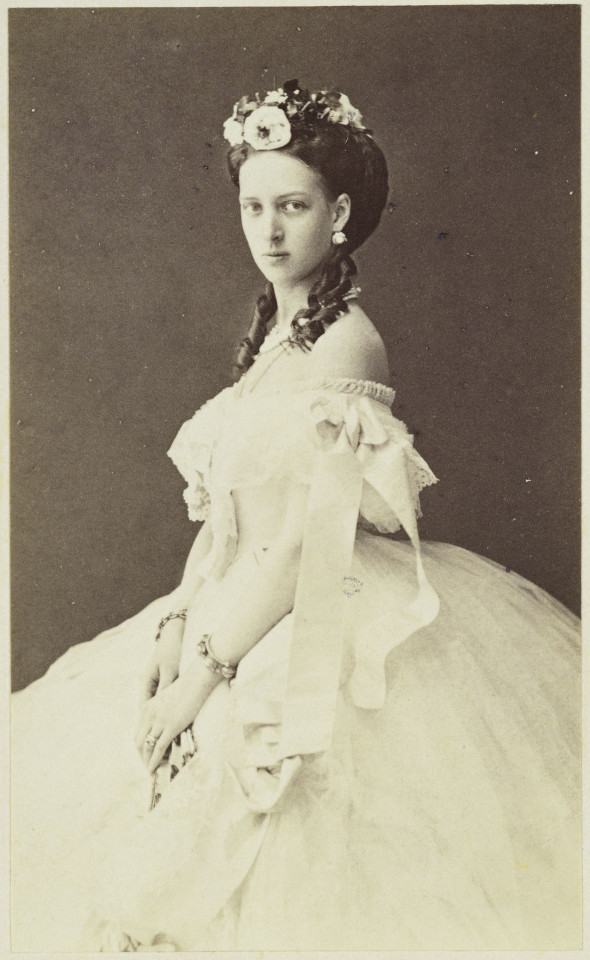
3. Princess Viktoria of Prussia

4. Princess Beatrice of Great Britain

5. Grand Duchess Xenia Alexandrovna of Russia

6. Duchess Mathilde Ludovika aka “Spatz” in Bavaria

7. Princesses Margarita, Theodora, Cecilie, and Sophie of Greece and Denmark
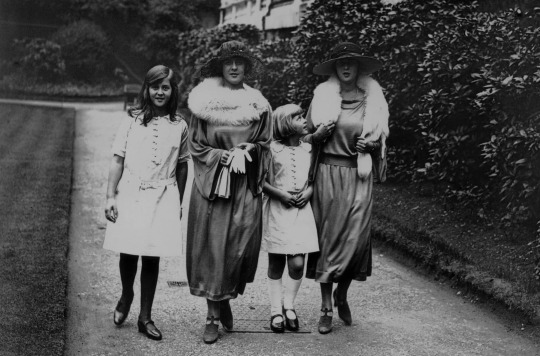
Feel free to ask me this question again because i have a lot more people in mind lol!
Thank you for asking!!!
#answered ask#princess charlotte of prussia#queen alexandra of the united kingdom#xenia alexandrovna#princess beatrice#Duchess Mathilde ludovika in Bavaria#princess margarita of greece and denmark#princess theodora of greece and denmark#princess cecilie of greece and denmark#cecilie of hesse#princess sophie of greece and denmark
9 notes
·
View notes
Text
"Well integrated": Judge left rapist Mohammed M.(23) free

You have to read the reasons for the verdict twice: Because he was "fully integrated," a judge in Regensburg, Bavaria, let the confessed rapist of a girl (16) go free. The fugitive was given 22 months probation and a condition: he may only drink a small amount of beer.
If it were not so sad, it could be an episode from the royal Bavarian district court: In Regensburg, the Afghan refugee Mohammad M. (23) had to accept responsibility for sexual harassment, coercion and rape of a teenager. Despite confessing, he left the courtroom as a free man. The shameful verdict: 22 months on probation, participation in anti-aggression training. And: In the future, the Muslim may only consume so much alcohol that he has a maximum of 0.5 per mille in his blood.
The very fact that a 23-year-old sex offender will enjoy the benefits of juvenile criminal law is sour grapes. But the refugee, who entered the country in 2015, was, by his own admission, 19 years old when he started his series of assaults on young women. Legally, he was treated as an adolescent.
It began on a park bench near the main train station. The drunken Mohammad M. harassed a girl, groped her under her clothes. Only after fierce resistance did he let go of his victim. A short time later he sat down with the teenager (16) and violated her.
Weeks later, he violently forced a young woman to perform oral sex in a railroad underpass. He harassed further victims, molested them sexually. Crimes against five women were charged. After a complaint, police arrested him at the airport on his return from home leave in Kabul.
Traumatized victim gratefully declined compensation.
According to the defense attorney, the judge described the confessed defendant as a "prime example" of "how to get along well in Germany". After all, he had graduated from secondary school after entering the country and completed an apprenticeship with a heating engineer. In addition, the Afghan kicked in a local soccer club.
Mohammad M. offered the still traumatized rape victim voluntary compensation of 2,500 euros. The young woman declined with thanks.
2 notes
·
View notes
Note
In your former post I read that Grand Duchess Elena V tried to hook Princess Elizabeth of GAD to Umberto II, what did umberto think of her from his point of view? And considering Grand duchess Elena V is ambitious about it, what did she thought of Karl Toerring-Jettenbach? Since among her daughters Princess Elizabeth of GAD is just a Countess and her sisters are; a Princess of another country by marriage and a Duchess of high family.
Elizabeth's sister Olga wrote in her diary:
“I wonder if he’ll [Umberto] look at Woolly . . . Poor Mummy sacrificing her whole summer . . . God give it will bring some good results!”
But . . . no results were had. It was probably hopeless from the start, because Umberto may have been more interested in men than women, and everyone had been assuming he would marry Marie-Jose of Belgium someday (which he did). Marie-Jose in her own memoirs writes about how her mother talked about her marrying Umberto someday since she was small, and he became this sort of fantasy fairy tale prince to her. I think there is even a story of Marie-Jose as a child writing something like "When I am Queen of Italy I will ask for a list of all the poor people so I can help them" or something to that effect.
So, yeah, Elizabeth never really had a chance.
The Toerring-Jettenbachs are 'only' counts but they had a lot going for them. They are a mediatized house, which basically means they're a former ruling family who maintained rights and ranks higher than your average noble and most importantly were still considered 'equal' in terms of marriage. They were also very wealthy. Karl Theodor became the head of the house after the death of his father in 1929. And, they had some killer connections. Karl's aunt Elisabeth was the Queen of the Belgians (mother of Marie-Jose, mentioned above), and another aunt, Marie-Gabrielle, had been the first wife of Rupprecht of Bavaria. He might not have been a crown prince, but he was royal-ish, he was rich, and Elizabeth was nearing 30. By all accounts Ellen was happy enough with the match.
Elizabeth and Marina were considered great beauties at the time, but the fact the Greek royal family was in exile for most of the time they were husband-hunting made it a little trickier for them to land the sort of husbands their mother might have been hoping for.
5 notes
·
View notes
Text
Eastern European Escapade Part 4
The car’s packed, the playlist is set, and our hearts are racing with anticipation. We’re continuing our adventure and heading to Austria! From the stunning Alpine landscapes to the rich cultural heritage, we’re ready to explore every corner and create unforgettable memories. Buckle up—this journey promises to be incredible! Can you tell I'm excited?
Who better to welcome us to Austria but Mozart.




Here’s a fun fact about Vienna: Vienna has a unique tradition known as “Wiener Schnitzel,” but did you know that it has been a part of Viennese culture for centuries? Rumor has it that the dish is believed to have originated in Vienna in the 19th century, but its roots go back even further. The traditional Wiener Schnitzel is made from veal, and its preparation and presentation have become a hallmark of Viennese cuisine. If you’re a fan of food, you have at least try an authentic Wiener Schnitzel in Vienna is a must!








Here's a fascinating fact: Empress Elisabeth of Austria (known as Sisi) and Marie Antoinette were indeed related. Sisi was Marie Antoinette’s grandniece. Sisi's mother, Duchess Ludovika of Bavaria, was the sister of Marie Antoinette's husband, Louis XVI. So, while they never met, these two iconic women from history shared a family connection through their royal bloodlines! Also, a Palace!




Belvedere Palace


Belvedere Palace in also like the Louvre is known for its stunning art collection, particularly its impressive array of Austrian art. The palace houses two main museums: the Upper Belvedere and the Lower Belvedere, both showcasing masterpieces from different periods.
Upper Belvedere:
Gustav Klimt: The Upper Belvedere is home to Klimt’s iconic "The Kiss" (1907-1908), one of the most famous works of the Art Nouveau movement. This masterpiece, with its intricate gold leaf and sensual portrayal, is a highlight of the collection.
Egon Schiele: You’ll also find works by Schiele, a protégé of Klimt, known for his raw and expressive style. His pieces often explore themes of human emotion and form.
Lower Belvedere:
Baroque Art: The Lower Belvedere features a collection of Baroque art and architecture. It includes works by artists like Johann Michael Rottmayr and the magnificent frescoes by Luca Giordano that decorate the palace’s ceilings.
Medieval and Renaissance Art: It also displays a range of medieval and Renaissance pieces, showcasing the evolution of art through the centuries.
The Belvedere Palace itself is a masterpiece of Baroque architecture, designed by Johann Lukas von Hildebrandt. The stunning gardens and the palace's design complement the exceptional art collections housed within.










In the heart of Austria lies Salzburg, a city where history and melody intertwine seamlessly. Nestled between rolling hills and the majestic Alps, Salzburg is famously known as the birthplace of Wolfgang Amadeus Mozart. Its baroque architecture and charming streets feel like a living museum, taking visitors back to a bygone era.
But Salzburg’s fame extends beyond its classical roots. In the early 1960s, this picturesque city became the backdrop for one of cinema’s most beloved musicals, The Sound of Music. The film’s enchanting scenes, from the hills alive with the sound of music to the picturesque Mirabell Gardens, were shot here, capturing the city's serene beauty and adding a touch of Hollywood magic to its historic charm.
Visitors today can follow the footsteps of Maria and the von Trapp family, exploring iconic filming locations such as the Nonnberg Abbey and the stunning Leopoldskron Palace. As you wander through Salzburg’s cobblestone streets and lush gardens, you can’t help but feel a sense of timeless wonder, where music and history harmoniously blend into an unforgettable experience.
#makingmyway#travel#floridaboy#europeanroadtrip#travel photography#traveling#beautiful destinations#europe#austria#mozart#sound of music#gay men#onthego#life worth living#international#liveyourstory#offthebeatenpath#adventure
0 notes
Text
Events 2.14 (before 1930)
748 – Abbasid Revolution: The Hashimi rebels under Abu Muslim Khorasani take Merv, capital of the Umayyad province Khorasan, marking the consolidation of the Abbasid revolt.
842 – Charles the Bald and Louis the German swear the Oaths of Strasbourg in the French and German languages.
1014 – Pope Benedict VIII crowns Henry of Bavaria, King of Germany and of Italy, as Holy Roman Emperor.
1130 – The troubled 1130 papal election exposes a rift within the College of Cardinals.
1349 – Several hundred Jews are burned to death by mobs while the remaining Jews are forcibly removed from Strasbourg.
1530 – Spanish conquistadores, led by Nuño de Guzmán, overthrow and execute Tangaxuan II, the last independent monarch of the Tarascan state in present-day central Mexico.
1556 – Having been declared a heretic and laicized by Pope Paul IV on 4 December 1555, Archbishop of Canterbury Thomas Cranmer is publicly defrocked at Christ Church Cathedral.
1556 – Coronation of Akbar as ruler of the Mughal Empire.
1613 – Wedding of Princess Elizabeth and Frederick V of the Palatinate at Whitehall Palace, London.
1655 – The Mapuches launch coordinated attacks against the Spanish in Chile beginning the Mapuche uprising of 1655.
1778 – The United States flag is formally recognized by a foreign naval vessel for the first time, when French Admiral Toussaint-Guillaume Picquet de la Motte renders a nine gun salute to USS Ranger, commanded by John Paul Jones.
1779 – American Revolutionary War: The Battle of Kettle Creek is fought in Georgia.
1779 – James Cook is killed by Native Hawaiians near Kealakekua on the Island of Hawaii.
1797 – French Revolutionary Wars: Battle of Cape St. Vincent: John Jervis, (later 1st Earl of St Vincent) and Horatio Nelson (later 1st Viscount Nelson) lead the British Royal Navy to victory over a Spanish fleet in action near Gibraltar.
1804 – Karađorđe leads the First Serbian Uprising against the Ottoman Empire.
1831 – Ras Marye of Yejju marches into Tigray and defeats and kills Dejazmach Sabagadis in the Battle of Debre Abbay.
1835 – The original Quorum of the Twelve Apostles, in the Latter Day Saint movement, is formed in Kirtland, Ohio.
1849 – In New York City, James Knox Polk becomes the first serving President of the United States to have his photograph taken.
1852 – Great Ormond St Hospital for Sick Children, the first hospital in England to provide in-patient beds specifically for children, is founded in London.
1855 – Texas is linked by telegraph to the rest of the United States, with the completion of a connection between New Orleans and Marshall, Texas.
1859 – Oregon is admitted as the 33rd U.S. state.
1876 – Alexander Graham Bell applies for a patent for the telephone, as does Elisha Gray.
1879 – The War of the Pacific breaks out when the Chilean Army occupies the Bolivian port city of Antofagasta.
1899 – Voting machines are approved by the U.S. Congress for use in federal elections.
1900 – The British Army begins the Battle of the Tugela Heights in an effort to lift the Siege of Ladysmith.
1903 – The United States Department of Commerce and Labor is established (later split into the Department of Commerce and the Department of Labor).
1912 – Arizona is admitted as the 48th and the last contiguous U.S. state.
1912 – The U.S. Navy commissions its first class of diesel-powered submarines.
1918 – Russia adopts the Gregorian calendar.
1919 – The Polish–Soviet War begins.
1920 – The League of Women Voters is founded in Chicago.
1924 – The Computing-Tabulating-Recording Company changes its name to International Business Machines Corporation (IBM).
1929 – Saint Valentine's Day Massacre: Seven people, six of them gangster rivals of Al Capone's gang, are murdered in Chicago.
0 notes
Text
Mail,
A) anon, yes, Shaw and deBrincat's 1st boor. children are their spitting image

You see Shaw in his baby daughter. Andy aka Andrew lol. What a gift lol
B) no big sightings or meet up of the Pens ladies and Kathy Leutner so far.. The last one was Winter Classics. No more merch to promote recently.

C) anon, yes, definitely Prince Harry has copied Shaw as former Puck bunny Meghan keeps eyes not on the Pens but what's up in NHL and USA. Marketa is still in USA and her lawyers lodge a suit against revealing info about her Balmoral in his an-nals for canals lol
Nhl star


Crazzy cclown below


Anon, tthey are not generally PR smart savvy as much as they love press or PR. It is all what UK Black Lord of PR stated that their in law women are lazy and a devil can't steal anything regarding the publicity. Instead of being a part of volunteering gardening group with Archwel there is no Markle in sight.. The Cambridge are utterly lazy and just 2 events for William with his simple drivel what his wife Kannot and he Will not and kids do exactly what other kids. They herded a staff of the hospital into the inside foyer so no boo from non regal Liverpool but here we go again. No OK number of real work to steer it away s well as gain their unkeep in hard times. They do nothing since Queen passed away and like Markle - pose, delegate or ask a journo to pass it s source of druggie uncle said, call the pa's they drive around lol.
Matketa cares and she is stable with her work as a routine taken seriously by an unsung hero. Publicity or not. UK Chicago.


Meghan markle and Prince Henry Hewitt were annoying with a posing at US graveyard with their own photog. We know why. No genuine bone in their bodies.

lool on in laws unsporty Kate or Camilla. Lazy to core to move a finger after Good Will hunting..Chuck any duties away. Work done. Marketa and Anne, Zara have fun.

Marketa and Zara share like of Zimmerman dresses and horses, sport and fun.

mockery of Kate's out of trend ridiculous headbands and Russian kokoshka tiaras,,calling her Katushka as an occupant parasite squatter at her estates. Nothing than rags aka clothes and tabs. The Sussexes sued for a breach about Balmoral in the book Spare. In USA court. Fun and horoscope start.

kate's brother copies Marketa's exact brand of the paddleboad but otherwise twice bankrupt and night by Mr Hydrogen for freebies..so all these in laws and ruling Windsor male wishy washed trio. King as a coward and a liar, as the sinners up to the church and Markle's helper ex KGB Babis up to the church and the crown Jewell's lol.
I think Markle is up to her TLC plastic surgeries. Zara with her husband Mike look like good fun, work and chemistry. Not sure about other branches of ye Windsors but many insiders of different countries, ages, jobs, money, gender state that the most normal and reasonable and a Royal from. Titled Windsors is Marketa and Anne. Both sporty, work horses and no huge fuss. Kate does her clothes coding by colour like Markle, both into pearls margarita Marketa but none of them. Bother to pose as a volunteer at least for sake of PR.. You don't see a flask with coffee on the rock in Highlands close to Balmoral like Marketa in the case of Charles walking and posting his own photo lol. It's a car driving and so Kat. Camilla plots how dishonour M after Diana for no reason but she chased JT initials and no Muslim contender to put her into real crossfire as a honour trouble of a Royal lady. They are incredibly lazy, mean gold diggas and very silly regarding PR spin as they tout the publicity and seek attention. Check copycat Markle.

M described as only Windsor at the Windsor Castle and family (with the balls and brain cells) like Sophie of Bavaria only Habsburg in Hofburg in 1848 you know why Kate has posed as Empress Sissy in the black and white weird portrait where she looks more like her uni work about Carol's Alice in Wonderland, so her hairbands and match match coding nonsense. So Markle's Husband shirt lol. Pippa's sister in law named her son Otto like Habsburg, fat corrupt clown'z bedmate with similar personality disorder, career and abuse of power called her daughter after the actress of Empress Sissy.
Anne is very unglazed and unfashionable. She was app Jo Jo pants, not academic woman. Marketa is teensy and fashionable and an ice princess iron maiden meets a geekoid history buff and a book worm but both app no nonsense. No moaning unless with their men they picked themselves for being themselves, no sources said, full diary, their lives living full and marching to the beat of their drums. Loyal. Funny. Easygoing, leaning on family and clan. Sporty.
Why gaining PR galore in USA milking PR experts? All stated above. It is in tatters as Little Big Horn launches huge suit about Balmoral Castle and leak of its layout in US court against Prince Harry and the plaintiff named as UK royal with all paperwork of pedigree.
Both ex profi athletes, on Olympics in different capacities or boring village sport events or pond hockey games. Look on Evander Kane. I am not going into his injury, messy private life and arrangement with bankruptcy but he is doing well and great PR job with a reputation management and money making. Good job on the ice (not now) as a base. He does charity things and do hands on. He donates money not Gimme gimme us for others. She reveals something from his privacy but not too much. Not contradicting himself I am private yet my Al life and joystick is out. No bashing amily and exes now or players randomly because they were doing better. Mainky he lost his own money, he makes own money, runs new biz and apparel but sells his own name.. These women in law like Markle or the Middleton are non names and no Cinderella's ugly stepsisters and their new houses provided by stupid males up to mama Bucket snob close to her house. They were writing to Ronaldo and Markle to dozen of the athletes to chase them. They badmouth girls and ase them as rivalry. They chased their three men, Markle and Camilla are control freaks. Bulimia, personality disorder and alcoholism but no one day of pretending to be a gardener for publicity aka Bolland or Hollywood PR.
Evander Kane returns to NHL games. No blaming or playing saint but watch his good PR.
0 notes
Photo

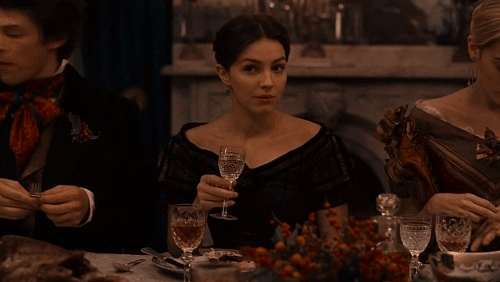




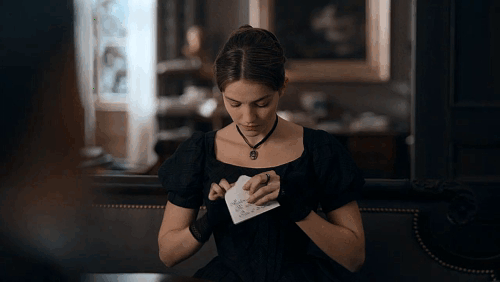


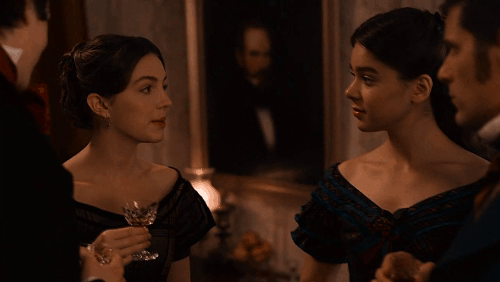
House of Wittelsbach: Princess Alexandra of Bavaria
Alexandra was born as the eight child and fifth daughter of King Ludwig I. of Bavaria and his wife Therese of Saxe-Hildburghausen. Alexandra’s siblings were King Maximilian II. of Bavaria, King Otto I. of Greece, Prince-Regent Luitpold of Bavaria, Grand Duchess Caroline Mathilde of Hesse and by Rhine, Duchess Adelgunde of Modena, Archduchess Hildegard of Austria and Prince Adalbert of Bavaria. But not only her siblings were of high-rank, among her aunts were Empress Caroline Augusta of Austria, Queen Elisabeth Ludovika of Prussia, Queens Amalie Auguste and Maria Anna of Saxony, Archduchess Sophie of Austria and Duchess Ludovika in Bavaria. Through the latter two, she was also a first half-cousin of Emperor Franz Joseph of Austria and his wife Elisabeth “Sisi” in Bavaria.
After his divorce, Louis Lucien Bonaparte, a cousin of Napoleon III., asked for Alexandra’s hand but her father declined. He thought it impossible to marry his daughter to a Napoleon but Alexandra’s fear of touch might have been another reason for him to decline a marriage. Alexandra stayed unmarried for the rest of her life. Instead her father made her abbess of the Royal Chapter for Ladies of Saint Anne in Munich and Würzburg.
In 1852, Alexandra began her literary career as an author and French to German translator. Several of her books were dedicated to charities and their earnings donated towards their cause.
Like other members of the House of Wittelsbach, Alexandra suffered from mental health issues too. She was obsessed with cleanliness and only wore white for a time. In her early twenties, she was haunted by the delusion of having swallowed a whole glass piano as a child. When she had to throw up one day, her servants tried to trick her by throwing a miniature piano into her puke to show her that she finally got rid of it.
Despite all her troubles, Alexandra was very close with her mother and tried to be as useful and kind as possible after her father’s death. Alexandra especially took care of the poor in Aschaffenburg. In 1860, she sponsored a public kitchen for the poor and sick there.
Alexandra died on May 8th, 1877, at the age of only 49 at Nymphenburg Castle. The same day and place, her younger brother Adalbert died too. But while Adalbert is buried at St. Michael, Alexandra rests in the Wittelsbach Crypt of Theatine Church in Munich.
// Ella Hunt in Dickinson
#women in history#historical women#historyedit#1800s#19th century#Alexandra of Bavaria#House of Wittelsbach#Royal Women of Bavaria
159 notes
·
View notes
Photo










Royal Women of Austria (2/?): Kunigunde of Austria
Kunigunde of Austria (16 March 1465 – 6 August 1520) was the only surviving daughter of Holy Roman Emperor Frederick II and his wife Eleanor of Portugal. Her older brother Maximilian of Austria, who would later marry Mary of Burgundy and become Emperor Maximilian. and her were the only two children to survive into adulthood,
Throughout her life, she maintained a close relationship with her brother who even mediated between her and her father to prevent an Imperial Ban. Kunigunde married Albert IV, Duke of Bavaria, and consumated the marriage without her father’s consent. He initally had given it but when Albert besieged Regensburg shortly before the planned wedding, The Emperor changed his mind. The marriage ultimately took place without Kunigunde knowing of her father’s change of mind. In the end, she bore her husband seven children, four girls and three boys.
Although Kunigunde had resigned from the Imperial court, she was political active by trying to influence politics in favor of the rights of her younger sons. Furthermore she stayed in close contact with her Emperor brother and other ruling relatives throughout Europe.
After the death of Albert in 1508 she later joined the Convent of Püttrich which she favoured and lived there until her death in 1520.
#Women in History#Historic women#historyedit#perioddramaedit#Kunigunde of Austria#Kunigunde of Bavaria-Munich#Maximilian - Das Spiel von Macht und Liebe#Maximilian - The Game of Power and Love#Royal Women of Austria
43 notes
·
View notes
Text
"South of Munich, where the green foothills of the Bavarian Alps start to rise against the massive granite wall of the Alps, there is a little valley with a river running through it. It is called Mühltal (Mill Valley). The stream is lined with unusual steep hills covered with dense beech forest. The area is especially known for its Celtic remains, including a well preserved Viereckschanze and several hill grave cemeteries. It is remarkably rich with natural wells.
Branching off sideways from the valley, there is a small road leading to the tiny hamlet of Leutstetten. It has only a few houses, a horse breeding farm and a castle owned by Bavaria’s former royal family, the Wittelsbach dynasty. At the village entrance there is a chapel standing in the middle of a small cemetery.
After entering the chapel the visitor notices an image of three women on the right wall. The image is from 1620 CE. According to local lore, it depicts three noble virgins who never married and gave all their money to church as a donation in order to enable the building of the chapel. The chapel was built and the image of the three women, who are known today as ‘the three sacred virgins’, was put inside in rememberance of their noble deed. Their names are inscribed as ‘AINPET, GBERPET, FIRPET’. Since there is a castle adjacent, one could think of three unmarried noblewomen devoting their lives to god and their money to the church, hoping for a good afterlife in paradise.
But there is something wrong with the chapel’s foundation legend. Local historians have checked it and found not a single piece of evidence confirming its truth. The three virgins were apparently neither born nor did they die. And in the church registers, which have survived into our times safe and sound, the donation at Leutstetten does not shine up.
And this makes very good sense! Because Ainpet, Gberpet and Firpet never lived as humans. Nor are they Christian saints. They are pagan goddesses, deeply rooted in the pre-Christian European past. Pagan goddesses in a Catholic church?
Well, this is a long story!
In Bavaria, the three women in the chapel are mostly known as Ainbeth, Borbeth and Wilbeth. Since their names all end with ‚ beth‘, they are usually called ‚die drei Bethen’ (the three Bethen). They also appear as,
Aubet, Cubet and Quere
Ainbet, Gwerbet and Wilbet
Embede, Warbede and Wilbede
Ambede, Borbede and Wilbede
Ainpet, Gberpet and Firpet
‘Beten’ in modern German means ‘to pray’. Probably the act of worshipping the Bethen was so important and widespread that their name left its mark on the word for praying to them. Firpet or Firbet, the name of the third woman on the Leutstetten image, in modern German sounds pretty much like ‘Fürbitte’ (intercession).
The Bethen were venerated especially in the presence of trees, wells and stones. This finds its expression in the terms ‘Bethelbäume'(Bethen trees),’Bethenbrunnen’ (Bethen wells) and ‘Bethensteine’ (Bethen stones). As we know, worship at wells, in forest groves and near unusual stones was a widespread feature in Celtic and Germanic religion, so we can safely assume that the Bethen cult has pre-Christian roots."
#the bavarian triple goddess#a study of the cult of the three bethan#die drei beten#germanic mythology#goddess worship#germanic pantheon goddesses#multiple goddess tag#seal womyn reads#i posted a bit from the introduction but please if you're interested read the rest it's fascinating and very above board wrt speculation#göttinen#schicksalsgöttinen#herstory blogging#goddess blogging
24 notes
·
View notes
Text
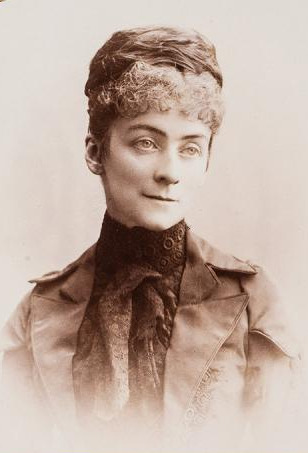

After having been betrothed to Ludwig II, King of Bavaria, Sophie Charlotte married the Duke of Alençon. Her life and its ending may be summed up in these few words: “ She died as nobly as she lived."
She perished, burnt alive in the terrible catastrophe of the Bazar de la Charité in Paris, in May 1897. The cinematograph was at that time a novel institution, and the operator, with inconceivable clumsiness, set fire to a room above the one in which the bazaar was held. The ceiling was all in flames before any attempt was made to clear the hall. There was a horrible struggle, in which the strongest had the advantage. However, among the men whose brutal selfishness seems to have stifled all chivalrous feeling, there were a few who thought of the Duchess. They hastened to her help, imploring her to escape, even trying to drag her away by force; but she refused. “I shall stay to the last,” she replied. “Save the others first.” Some Sisters of the Order of S. Vincent de Paul would not leave her, determined to sacrifice their lives also, if need be. The Duchess remained standing; the Sisters knelt round her, praying. As the fire drew close to her she loosened her magnificent hair, which covered her like a cloak. And it was so that those who survived the disaster saw her for the last time.
Laurent, Lea (1916). Our Lady Of Belgium (translation by Elisabeth M. Lockwood)
ON THIS DAY, IN 1897, SOPHIE CHARLOTTE, DUCHESS OF ALENÇON (NEÉ DUCHESS IN BAVARIA), DIED IN THE FIRE OF THE BAZAR DE LA CHARITÉ. She was the youngest daughter of Maximilian, Duke in Bavaria, and his wife Princess Ludovika of Bavaria, and therefore a sister of Empress Elisabeth of Austria. She was briefly engaged to her cousin King Ludwig II of Bavaria in 1867, however the King had no interest in marriage at all and eventually called it off. Less than a year later Sophie married Ferdinand d'Orléans, Duke of Alençon, a grandson of Louis Phillipe, the last King of the French. They had two children, Louise and Emmanuel.
In the later years of her life Sophie did plenty of charity work. The Bazar de la Charité was an annual charity event held in Paris since 1885, in which many different items were sold. The tragic accident that set the place on fire in May 1897 took the lives of 126 victims, many of them aristocratic women, the Duchess of Alençon being the most prominent of them. Sophie's body was so damaged that only her dentist could identify her by her teeth (something unprecedented in France that led to a breakthrough in forensic odontology). Her remains rest in the Chapelle royale de Dreux, the traditional burial place of the members of the House of Orléans.
#:(((((#sophie in bavaria duchesse d'alençon#house of wittelsbach#historicwomendaily#author: lea laurent#on this day in history
112 notes
·
View notes